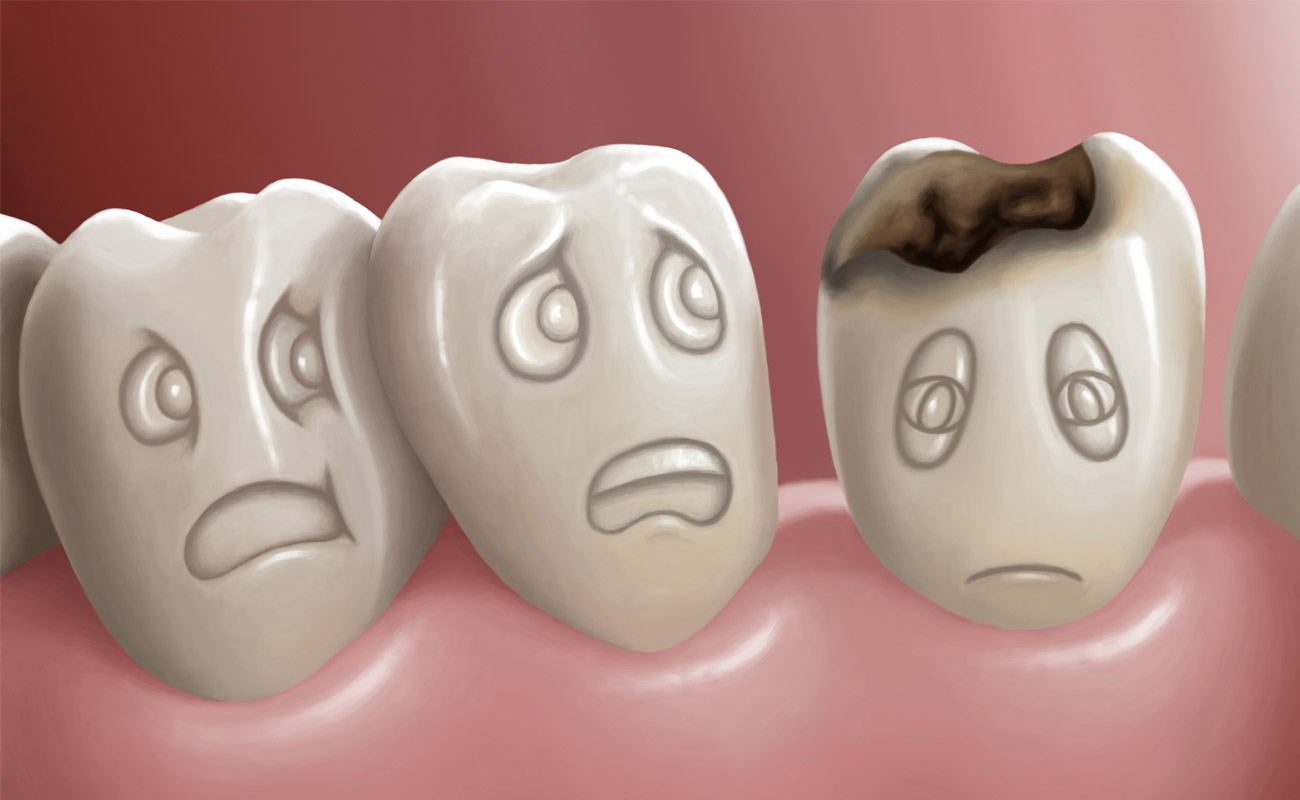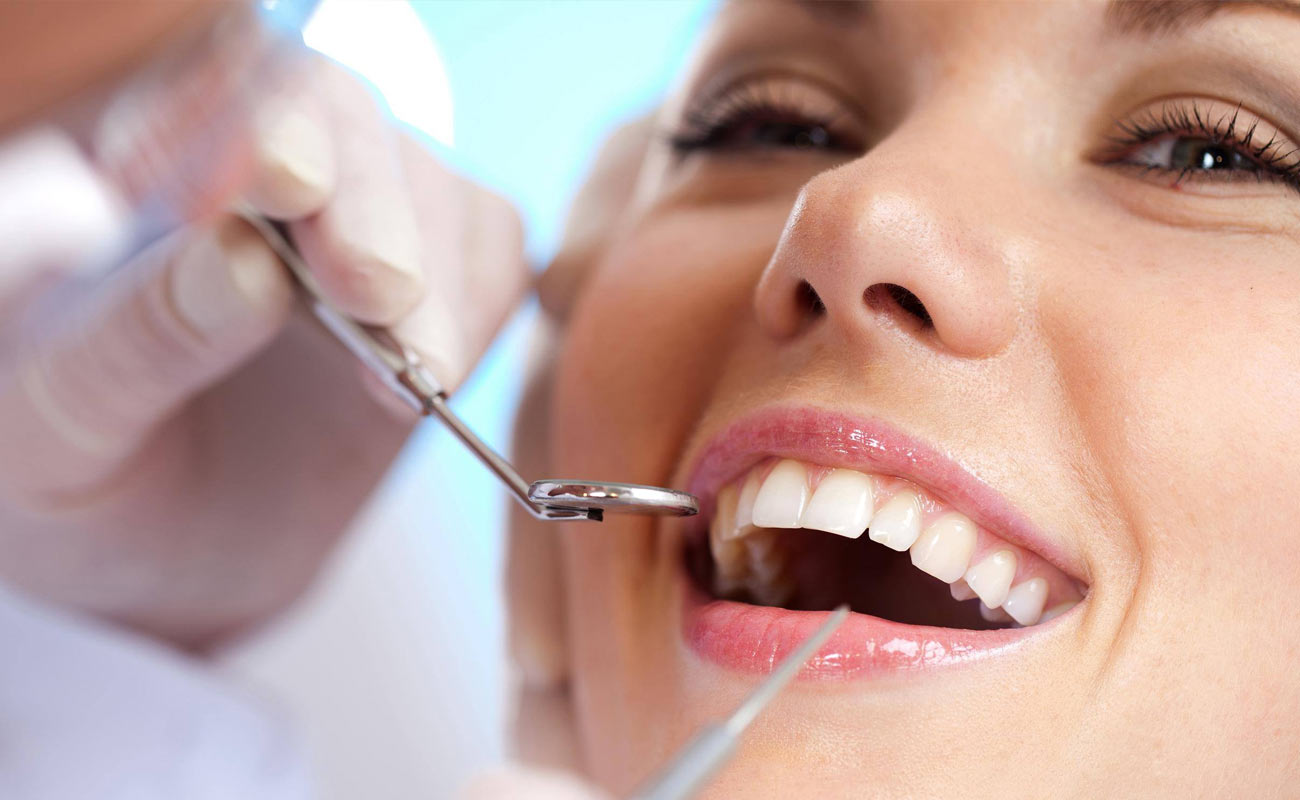Did you know tooth decay, also known as cavities, is the second most prevalent disease in the United States? (The common cold is first.) Tooth decay occurs when plaque, the sticky substance that forms on teeth, combines with the sugars and/or starches of the food we eat. This combination produces acids that attack tooth enamel.

The best way to prevent tooth decay is by brushing twice a day, flossing daily, and going to your regular dental check ups. Eating healthy foods and avoiding snacks and drinks that are high in sugar are also ways to prevent decay.
The signs and symptoms of cavities vary, depending on their extent and location. When a cavity is just beginning, you may not have any symptoms at all. As the decay gets larger, it may cause signs and symptoms such as:

When to see a dentist
You may not be aware that a cavity is forming. That's why it's important to have regular dental checkups and cleanings, even when your mouth feels fine. However, if you experience toothache or mouth pain, see your dentist as soon as possible.
Bacteria and food can cause tooth decay. A clear, sticky substance called plaque is always forming on your teeth and gums. Plaque contains bacteria that feed on the sugars in the food you eat.
As the bacteria feed, they make acids. The acids attack the teeth for 20 minutes or more after you eat. Over time, these acids destroy tooth enamel, causing tooth decay.
Things that make you more likely to have tooth decay include:
Risk Factors are those associated with an increased chance of disease or infection. They may be linked to a disease, but do not necessarily cause it.
They include:
Most cavities are discovered in the early stages during routine dental checkups.
A dental exam may show that the surface of the tooth is soft.
Dental x-rays may show some cavities before they are visible to the eye.
Caries is a process. In its early stages, tooth decay can be stopped. It can even be reversed. Fluorides and other prevention methods also help a tooth in early stages of decay to repair itself (remineralize). White spots are the last stage of early caries.
Once caries gets worse and there is a break in the enamel, only the dentist can repair the tooth. Then the standard treatment for a cavity is to fill the tooth. If a drill is used, the dentist will numb the area. If a laser is used, a numbing shot is not usually required. The decayed material in the cavity is removed and the cavity is filled.
Many fillings are made of dental amalgam or composite resin. Amalgam is a silver-gray material made from silver, mercury, copper or other metals. Composite resin offers a better appearance because it is tooth-colored. Newer resins are very durable.
Amalgams are used in molars and premolars because the metal is not seen in the back of the mouth. Composite and ceramic materials are used for all teeth.
If a cavity is large, the remaining tooth may not be able to support enough filling material to repair it. In this case, the dentist will remove the decay and cover the tooth with a ceramic inlay, onlay or artificial crown. These may be made in the office or in a lab.
Sometimes bacteria may infect the pulp inside the tooth even if the part of the tooth you can see remains relatively intact. In this case, the tooth will need root canal treatment. A general dentist or an endodontist will remove the pulp and replace it with an inert material. In most cases, the tooth will need a crown.
The early stages of decay are usually painless. Only regular dental examinations and X-rays (or other caries-detecting devices) can show early trouble. If your teeth become sensitive to chewing or to hot, cold or sweet foods or drinks, contact your dentist.

If caries is not treated, it likely will cause the tooth to decay significantly. Eventually, uncontrolled decay may destroy the tooth.
Having caries increases your risk of more caries for several reasons:
Oral hygiene is necessary to prevent cavities. This consists of regular professional cleaning (every 6 months), brushing at least twice a day, and flossing at least daily. X-rays may be taken yearly to detect possible cavity development in high risk areas of the mouth.
Chewy, sticky foods (such as dried fruit or candy) are best if eaten as part of a meal rather than as a snack. If possible, brush the teeth or rinse the mouth with water after eating these foods. Minimize snacking, which creates a constant supply of acid in the mouth. Avoid constant sipping of sugary drinks or frequent sucking on candy and mints.
Dental sealants can prevent some cavities. Sealants are thin plastic-like coatings applied to the chewing surfaces of the molars. This coating prevents the accumulation of plaque in the deep grooves on these vulnerable surfaces. Sealants are usually applied on the teeth of children, shortly after the molars erupt. Older people may also benefit from the use of tooth sealants.
Fluoride is often recommended to protect against dental caries. It has been demonstrated that people who ingest fluoride in their drinking water or by fluoride supplements have fewer dental caries. Fluoride ingested when the teeth are developing is incorporated into the structure of the enamel and protects it against the action of acids.
Topical fluoride is also recommended to protect the surface of the teeth. This may include a fluoride toothpaste or mouthwash. Many dentists include application of topical fluoride solutions (applied to a localized area of the teeth) as part of routine visits.

colgate.com, nytimes, deardoctor.com, webmd, mayoclinic.org
Submit Comment